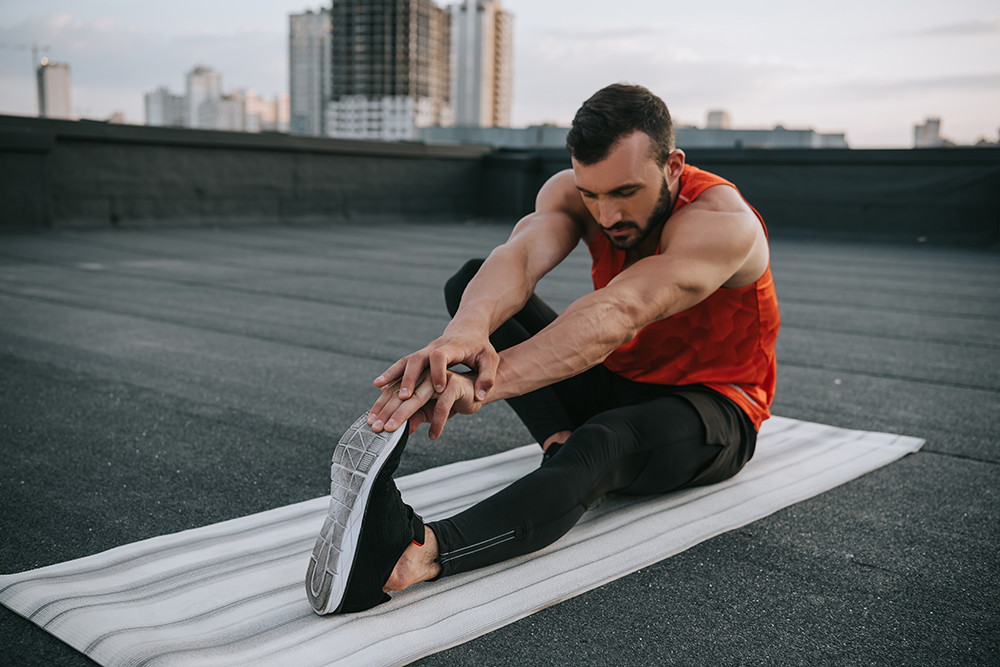
The Vital Role of Stretching Before and After Your Workouts
Share
In the world of fitness, we often hear about the importance of exercise, diet, and hydration. However, there's another crucial component that sometimes takes a back seat: stretching. Whether you're a seasoned athlete or just starting your fitness journey, stretching before and after your workouts can make a significant difference in your overall health, performance, and recovery. In this blog post, we'll delve into why stretching should be a non-negotiable part of your fitness routine.
The Pre-Workout Stretch: Preparing Your Body for Action
Before you jump into your workout, whether it's cardio, strength training, or something in between, taking the time to stretch is like giving your body a heads-up that it's time to move. Here's why it's crucial:
1. Enhanced Flexibility
Stretching your muscles before exercise increases their flexibility. This increased range of motion allows you to move more freely during your workout. Improved flexibility can also help prevent injuries by reducing the strain on your muscles and joints.
2. Injury Prevention
Warming up with stretches reduces the risk of injury. When your muscles are cold and stiff, they're more susceptible to strains and tears. Gentle stretching increases blood flow to your muscles, making them more pliable and less likely to get injured.
3. Better Performance
Stretching before your workout can improve your overall performance. When your muscles are properly warmed up and limber, you can engage them more effectively, resulting in better strength, endurance, and coordination during your exercise routine.
4. Mental Preparation
Stretching is not just about physical readiness; it's also about mental preparation. It gives you a few moments to focus on your body, your breathing, and your goals for the workout ahead. This mental connection can improve your concentration and help you get the most out of your session.
The Post-Workout Stretch: Recovery and Relaxation
Once you've completed your workout, your muscles have worked hard, and they deserve some post-exercise care. Here's why stretching after your workout is equally important:
1. Reduces Muscle Soreness
Post-workout stretching can help reduce muscle soreness and stiffness. It aids in the removal of lactic acid buildup, a common cause of muscle discomfort after intense exercise. Stretching also encourages blood circulation, which promotes the delivery of essential nutrients and oxygen to your muscles, aiding in their recovery.
2. Maintains Muscle Length
After exercise, your muscles may tighten up, which can lead to reduced flexibility over time. Stretching post-workout helps maintain your muscles' length and prevents them from becoming overly tight, which can limit your range of motion.
3. Enhances Relaxation
Stretching at the end of your workout can be a moment of relaxation and mindfulness. It allows your heart rate to gradually return to normal, and it's an opportunity to reflect on your achievements during your workout. This cool-down period can also reduce post-exercise adrenaline, helping you transition into a more relaxed state.
4. Promotes Flexibility Development
While pre-workout stretching focuses on warming up your muscles, post-workout stretching is the ideal time to work on your flexibility. Muscles are already warm, making it easier to gently stretch and elongate them. Over time, consistent post-workout stretching can contribute to improved overall flexibility.
Tips for Effective Stretching
Now that we've established the importance of stretching, here are some tips to make your stretching routine as effective as possible:
1. Dynamic vs. Static Stretching
Before your workout, opt for dynamic stretching, which involves controlled movements that mimic the exercise you're about to perform. After your workout, switch to static stretching, where you hold each stretch for 15-30 seconds to encourage muscle relaxation and lengthening.
2. Focus on Major Muscle Groups
Pay attention to the major muscle groups you'll be using during your workout. This might include stretches for your legs, back, shoulders, and chest. Tailor your stretching routine to your specific exercise plan.
3. Breathe and Relax
During stretching, remember to breathe deeply and relax into each stretch. Tense muscles are less receptive to stretching, so maintaining a sense of calm is essential for effectiveness.
4. Don't Overstretch
Avoid overstretching, which can lead to injury. Stretch only to the point of mild discomfort, never to the point of pain. If a stretch feels painful, you've gone too far.
5. Consistency is Key
Make stretching a regular part of your fitness routine. Consistency is crucial for maintaining flexibility and reaping the full benefits of stretching.
Stretching is often overlooked in the world of fitness, but its benefits are undeniable. Whether you're preparing your body for a challenging workout or aiding in its recovery afterward, stretching plays a vital role in your overall fitness journey. It enhances flexibility, prevents injuries, improves performance, and promotes relaxation. So, the next time you lace up your workout shoes, remember that a few minutes of stretching can make a world of difference in achieving your health and fitness goals. Make stretching a priority, and your body will thank you for it.
